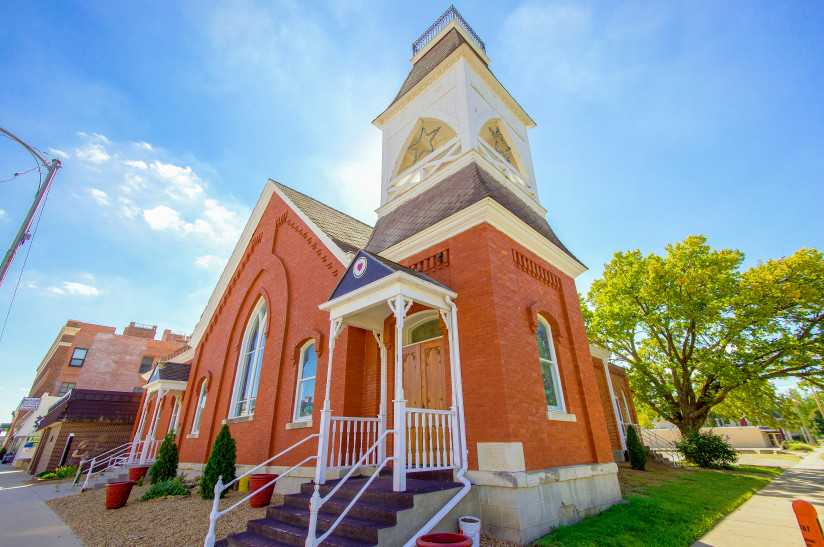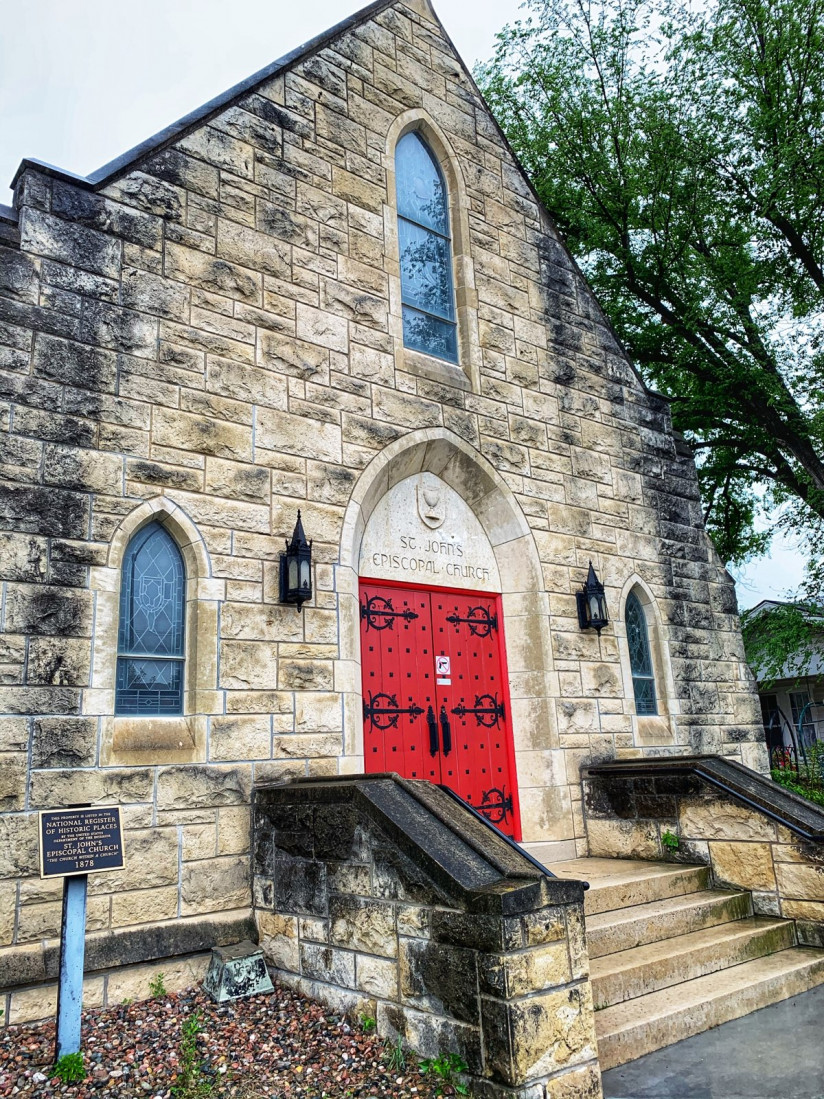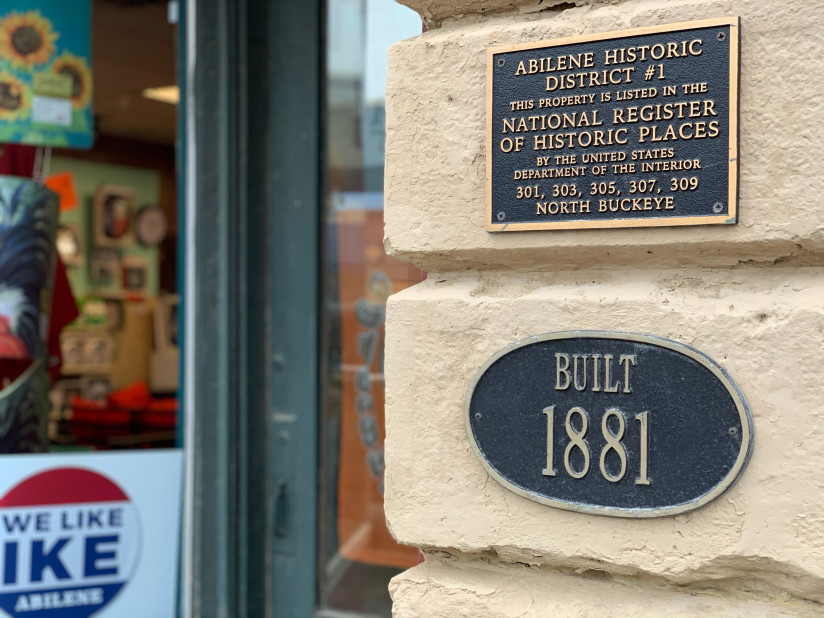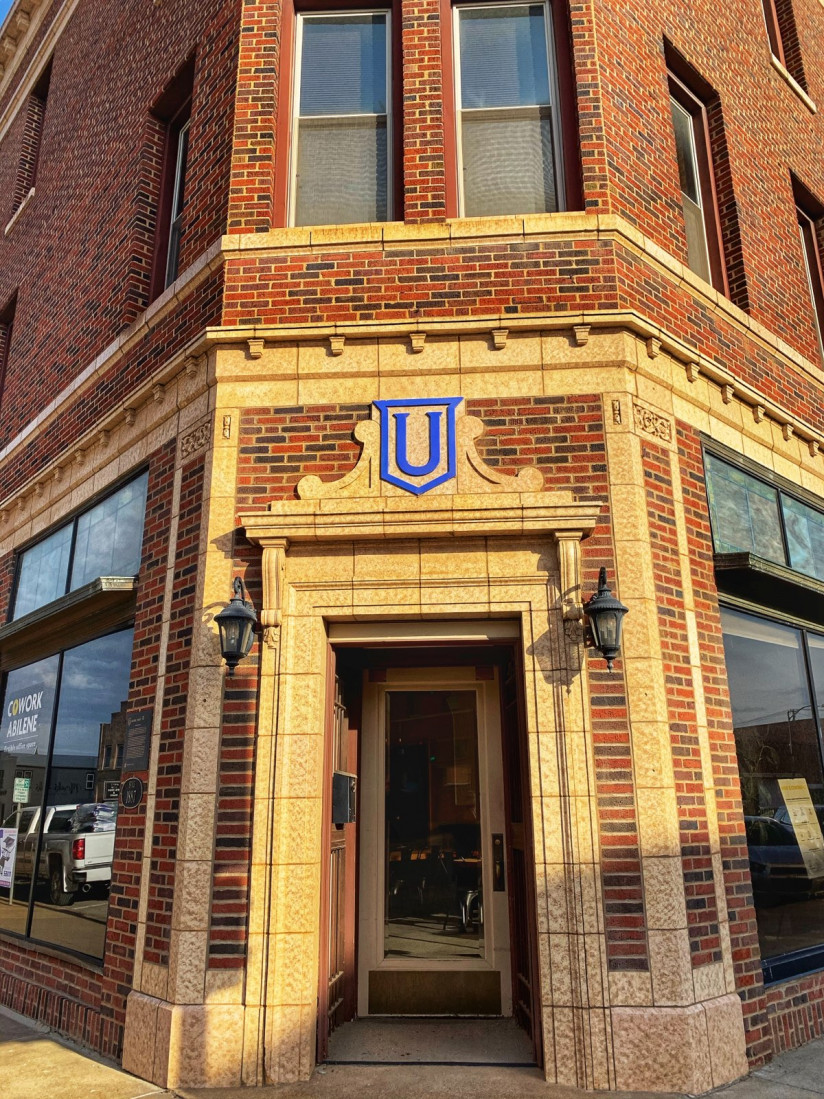5 More Historic Buildings to Learn While Walking Tour
Share more lessons on Abilene history with your family by walking, biking, or driving by these five sites that are listed on the National Register of Historic Places, an official list of the country's historic places worthy of preservation. Learn about architecture as well by looking for unique features like colored tiles, finials (distinctive ornaments along the roofline), sculptures, and masonry medallions and arches over windows and doorways.
1. Trinity Lutheran Church, 320 North Cedar Street
 The original red brick and limestone church in Gothic Revival style has been continuously used as a place of worship since 1878, housing Abilene’s second oldest congregation organized by several of the town’s founders. Notice the stained glass windows, arched and vertical brickwork, and the wooden bell tower that once held a steeple until it toppled after a tornado in 1962.
The original red brick and limestone church in Gothic Revival style has been continuously used as a place of worship since 1878, housing Abilene’s second oldest congregation organized by several of the town’s founders. Notice the stained glass windows, arched and vertical brickwork, and the wooden bell tower that once held a steeple until it toppled after a tornado in 1962.
2. Garfield School, 300 Northwest Seventh Street
This former elementary school was built in 1942 with the assistance of the federal Work Projects Administration during the New Deal era. Of blond brick, the building’s simple form and horizontal lines reflect Modern and Art Moderne architecture.
3. St. John’s Episcopal Church, 519 North Buckeye
 The sanctuary inside this limestone church built in 1939 incorporates the original wooden Gothic Revival church building constructed on the site in the 1800s; thus, it is dubbed the “church within a church.” Note the hammered finished door hardware.
The sanctuary inside this limestone church built in 1939 incorporates the original wooden Gothic Revival church building constructed on the site in the 1800s; thus, it is dubbed the “church within a church.” Note the hammered finished door hardware.
4. Abilene Historic District #1, 301-309 North Buckeye Avenue
 Of the Italianate style, the Thomas Building (301 and 303) and the J.M. Brenizer Building (305 and 307) were built in 1885, while the third building (309) was constructed in 1886. The next year, businesses in these buildings included two groceries, a carriage repository, a confectionary, and a millinery.
Of the Italianate style, the Thomas Building (301 and 303) and the J.M. Brenizer Building (305 and 307) were built in 1885, while the third building (309) was constructed in 1886. The next year, businesses in these buildings included two groceries, a carriage repository, a confectionary, and a millinery.
5. Abilene Downtown Historic District
 Roughly bounded by Northeast Fourth, West First, South Walnut and North Olive streets, Abilene’s downtown is comprised of buildings constructed in the mid 1880s to the mid-twentieth century in Revivals, Art Deco, and the Modern Movement styles.
Roughly bounded by Northeast Fourth, West First, South Walnut and North Olive streets, Abilene’s downtown is comprised of buildings constructed in the mid 1880s to the mid-twentieth century in Revivals, Art Deco, and the Modern Movement styles.
